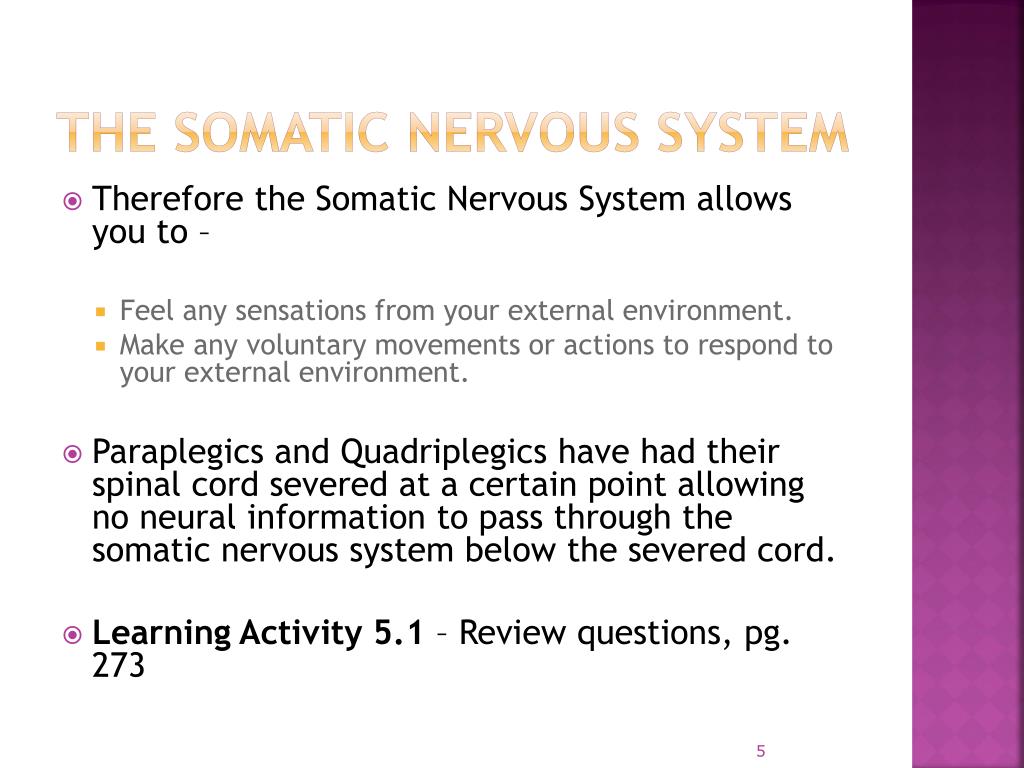

The somatic nervous system has sensory and motor pathways, whereas the autonomic nervous system only has motor pathways. Somatic Nervous System controls the bodys skeletal muscles.
#SOMATIC NERVOUS SYSTEM AP PSYCHOLOGY FREE#
The AP Psychology exam has 100 questions and 2 free response. The autonomic nervous system consists of two sub-components, whereas the somatic nervous system only has one. Biological Bases of Behaviour: The Nervous and Endocrine System. It models the exact format of the AP Psychology exam. the activation of the parasympathetic and sympathetic nervous systems. The sympathetic nervous system responds to external stimuli by preparing the body for fight or flight and the somatic nervous system responds to external stimuli (by carrying information from sensory receptors to the spinal cord and brain). Our AP Psychology Cognition practice test covers thinking, language, memory. State the relationship between receptors, the central nervous system (brain and spinal cord) and the effectors. The sympathetic nervous system (part of the autonomic nervous system) and the somatic nervous system respond to external stimuli. This package helps teachers teach their students to: -Explain how the nervous system coordinates and regulates body functions. PERIPHERAL NERVOUS SYSTEM (somatic/autonomic & sympathetic/parasympathetic) They also predict certain essential life outcomes such as education and health. Myers AP Psychology Notes Unit 1 Psychology’s History and Its Approaches Physio Ex.

The brain consists of multiple regions responsible for different functions, whereas the spinal cord has one main function. The somatic nervous system controls voluntary movements, transmits and receives messages from the senses, and is involved in reflex actions without the involvement of the CNS so that the reflex can occur very quickly. the autonomic nervous system the peripheral nervous system consists of the somatic nervous system (sns) and the. The brain provides conscious awareness and allows for higher-order thinking, while the spinal cord allows for simple reflex responses. the brain stem controls breathing and the spinal cord controls involuntary reflexes). Generally, efferent pathways send information from the spinal cord to the muscles, and regulate motor functions involved in the movement of the body and limbs. The brain stem and spinal cord both control involuntary processes (e.g. The somatic nervous system (SNS) includes all nerves that run to and from the spinal cord and send information to and from the muscles and senses. Here are some key similarities and differences when comparing the CNS (Brain & spinal cord) and PNS (somatic/autonomic & sympathetic/parasympathetic).ĬENTRAL NERVOUS SYSTEM (brain & spinal cord)


 0 kommentar(er)
0 kommentar(er)
